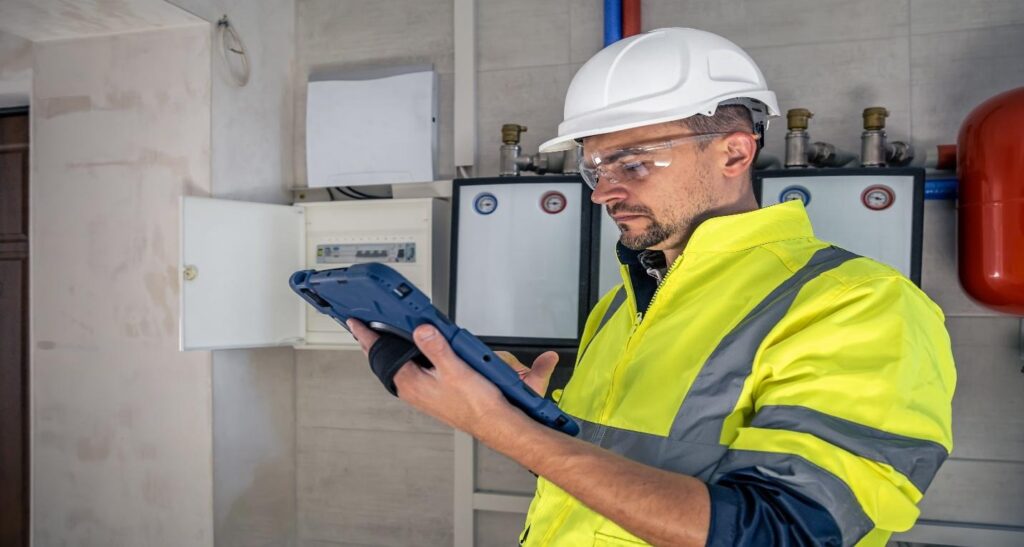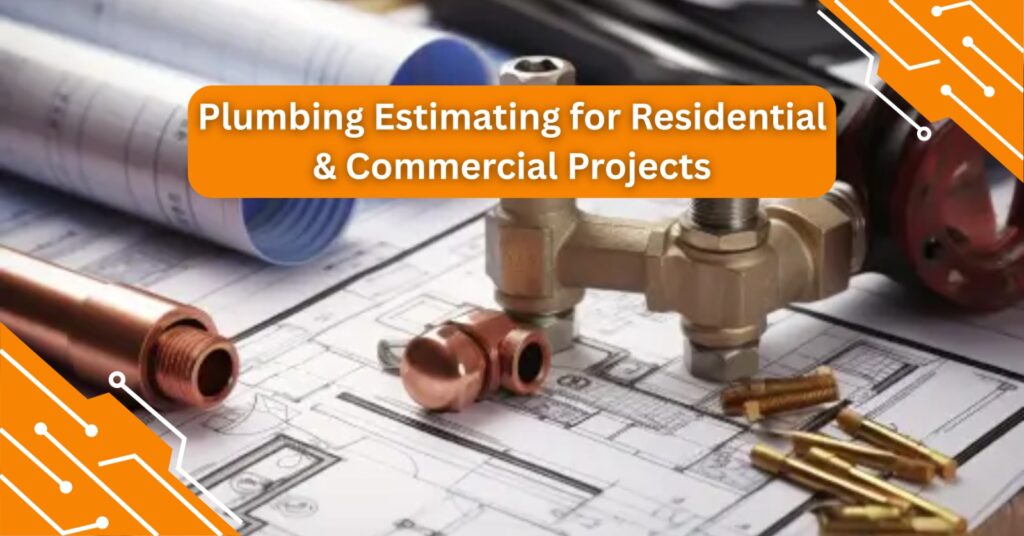Building a house or an office means planning every pipe and drain. A solid plumbing estimate stops surprise bills and keeps water flowing where it should. Water keeps life flowing, but one wrong number in your plumbing plan can increase your budget. For a home, the bathroom remodel cost can increase from $8,000 to $15,000 because you forgot to include the vent stack. Take another example: a busy restaurant is closed for weeks while plumbers reroute pipes that do not fit into the new electrical lines. These nightmares happen every day to contractors and homeowners who skip solid estimating. This blog gives you the exact roadmap to bypass these traps, save money, and finish on time.
Why Plumbing Estimates Hit Different for Homes vs. Businesses
A cozy two-story house needs pipes for three bathrooms, a kitchen, and maybe a laundry room. Total fixtures? Maybe 15. Pipe runs stay short, rarely over 50 feet from the water heater. Now take a four-story office building. For an office building, all requirements are increased, such as 60 toilets, 40 sinks, two kitchens, and rooftop units. Pipes are laid vertically through chases, twist around structural beams. One extra floor can add $4,000–$7,000 in risers and pressure pumps alone. Homes forgive small mistakes. Commercial jobs don’t, downtime costs thousands per hour. That’s why commercial estimates are split into phases: rough-in, top-out, trim, and testing.
Breaking Down the by System Type
Plumbers split jobs into clear systems. Each one needs its own count of parts and labor. Here’s how pros tackle the big three.
1. Water Supply System
Both cold and hot water lines are done for sinks, showers, and appliances. Start by counting the required fixtures for sinks, toilets, tubs, and dishwashers. Measure each run from the main point to each outlet. Add valves, reducers, and supports. In a three-story office, vertical risers add length fast. Copper is reliable and lasts for decades but costs more than PEX. Therefore, pick the right material early to lock in the price.
2. Sanitary Piping and Drainage
Sanitary pipes are the waste lines which carry used water to the sewer. Slope matters, pipes must drop 1/4 inch per foot or clogs follow. Count cleanouts every 50 feet and at direction changes. Vent pipes rise through the roof to let air in and keep drains running smoothly. Large scale projects need larger mains, a home might use a 4-inch pipe while a mall can be up to 6-inch.
3. Storm Drainage
Roof drains, area drains, and trench drains handle rain. Commercial roofs cover more square feet, so flow rates climb. Calculate rainfall per hour for your zip code, local codes spell it out. Oversize slightly to handle flash storms while undersize can cause floods.

Key Cost Drivers in Plumbing Estimates
Three big factors swing the final number. Miss one and the whole bid flops.
- Pipe Material: Copper resists corrosion but runs $4–$6 per foot installed. PEX flexes around corners and drops to $1–$2 per foot. PVC works for drains under $1 per foot. Check freeze risk, PEX handles cold snaps better in northern states.
- Floor Count and Building Height: Every extra floor requires longer vertical runs with higher pressure. Pumps kick in above 40 psi; add $1,500–$3,000 for a booster. Elevator shafts and chase walls eat space and labor.
- Fixture and Count: Basic toilets cost $150 while smart models cost $1,200. Commercial kitchens pile on grease interceptors ($2,000–$5,000 each). Count every water heater, backflow preventer, and hose bib.
Prices, costs and lifespan of materials
| Material | Cost per Foot | Best For | Lifespan |
| Copper | $5–$10 | Potable water | 50+ years |
| PEX | $0.50–$1.50 | Retrofits, homes | 40 years |
| PVC | $1–$3 | Drains, vents | 50+ years |
| Cast Iron | $10–$20 | Noisy commercial | 75+ years |
Local Codes: The Silent Budget Killer
Codes are not suggestions. They are the law. Miss a requirement and the inspector red-tags the job. Always keep the latest plumbing code for your country. For example, California demands water-saving fixtures, Chicago demands dielectric unions on every copper-to-galvanised connection, while Florida requires hurricane ties on roof vents. Add 5–10% of contingency for codes, especially in older remodels which require upgrading. A quick call to the building department saves rework later. Build code checks into your estimate from day one.

Step-by-Step Plumbing Takeoff Process
A takeoff turns blueprints into a shopping list. Follow these moves:
- Double-Check Measurements: One missed branch line triggers $800 in rushed change orders. Measure plans twice, then laser-verify on site. This habit alone prevents five-figure surprises.
- Update Pricing Monthly: Copper and fittings jump like lumber, stale quotes eat your margin. Pull fresh supplier rates every 30 days. Lock in accurate numbers before bidding.
- Use Digital Takeoff Software: Click once on the screen, and count every fitting instantly. Manual errors drop up to 70% with tools like PlanSwift. What used to take hours now takes minutes.
- Site Visits Beat Assumptions: Hidden beams, rock ledges, or old lines wreck desk estimates. Walk the job before final numbers. Spot issues early and adjust pipe runs on the spot.
- Peer Review: Swapping your takeoffs with peers can catch 90% of overlooked items. Small reviews can provide massive protection.
MEP Estimating Workflow: Where Plumbing Fits
Mechanical, Electrical, Plumbing (MEP) teams share the load. Coordinate early:
- HVAC Needs Water: Boilers, chillers, and cooling towers tap the same water mains. Size pipes for peak demand or systems starve. Flag shared loads during design review.
- Fire Sprinklers Share Risers: Separate meters but often the same trench and vertical chase. Coordinate depths to avoid cutting one for the other. One trench saves thousands in excavation.
- BIM Models: Load plumbing, HVAC, and electrical into one 3D model. Clash detection flags a 4″ waste line crossing a duct instantly. Fix on screen, not after the drywall goes up.

Conclusion
Plumbing estimating turns chaos into clarity. Break the project into water supply, waste, and storm systems. Track pipe material, building height, and fixture specs. Stay updated on local codes and double-check every foot of pipe. Builders who master these steps bid confidently and keep the budget on track and within time. Homeowners who understand the process ask sharper questions and tackle budget busters. The next project starts with one accurate number; make it yours.
Turn prospects into profits. Partner with ALM Estimating and get plumbing estimating that wins bids. Get a Quote now. Get a 30% discount on your first estimate.
FAQs:
Q1. What’s included in a full plumbing estimate?
A complete estimate lists every pipe length, fitting, valve, fixture, and labor hour. It covers water supply, waste lines, vents, and any pumps or backflow devices. Contingency for code changes and waste removal rounds it out.
Q2. How do I choose between copper and PEX pipe?
Copper lasts 50+ years and handles heat; PEX installs faster and resists freezing. Compare local labor rates, PEX saves 30% on install time. Check code; some areas ban PEX for potable water.
Q3. Why does floor count change the price so much?
Extra floors mean longer vertical risers, higher water pressure, and sometimes booster pumps. Labor climbs with scaffolding or lifts. A five-story building can add 25% over a single-story.
Q4. What are common plumbing code traps?
Missing vent terminations above the roofline, undersized traps, or forgetting ADA fixture heights. Always pull the local amendments, the national code is just the baseline.
Q5. How accurate are digital takeoff tools?
Modern software reads PDFs and BIM models with 98% accuracy on linear runs. Human review still catches fixture miscounts. Pair tech with experience.
Q6. Can I estimate plumbing without blueprints?
Rough thumb rules work for ballpark 150 ft. pipe per bathroom but final bids need plans. Site walks help, yet hidden conditions still surprise.
Q7. What’s a grease interceptor and when do I need one?
Restaurants and commercial kitchens require them to trap fats before they clog sewers. Size by meal volume; a 50-seat diner needs 100 gallons minimum.
Q8. How do I price water heaters correctly?
Count gallons per day, 40 for a small house, 75 for four bedrooms. Tankless saves space but needs bigger gas lines. Include expansion tanks and seismic straps where required.
Q9. Why add contingency to estimates?
Unexpected rock, asbestos removal, or design changes pop up. 5–15% covers most surprises without padding the bid unfairly.
Q10. How soon can I get a professional estimate?
Upload plans in the morning, receive a detailed breakdown by the next business day. Fast turnaround keeps your schedule tight.
